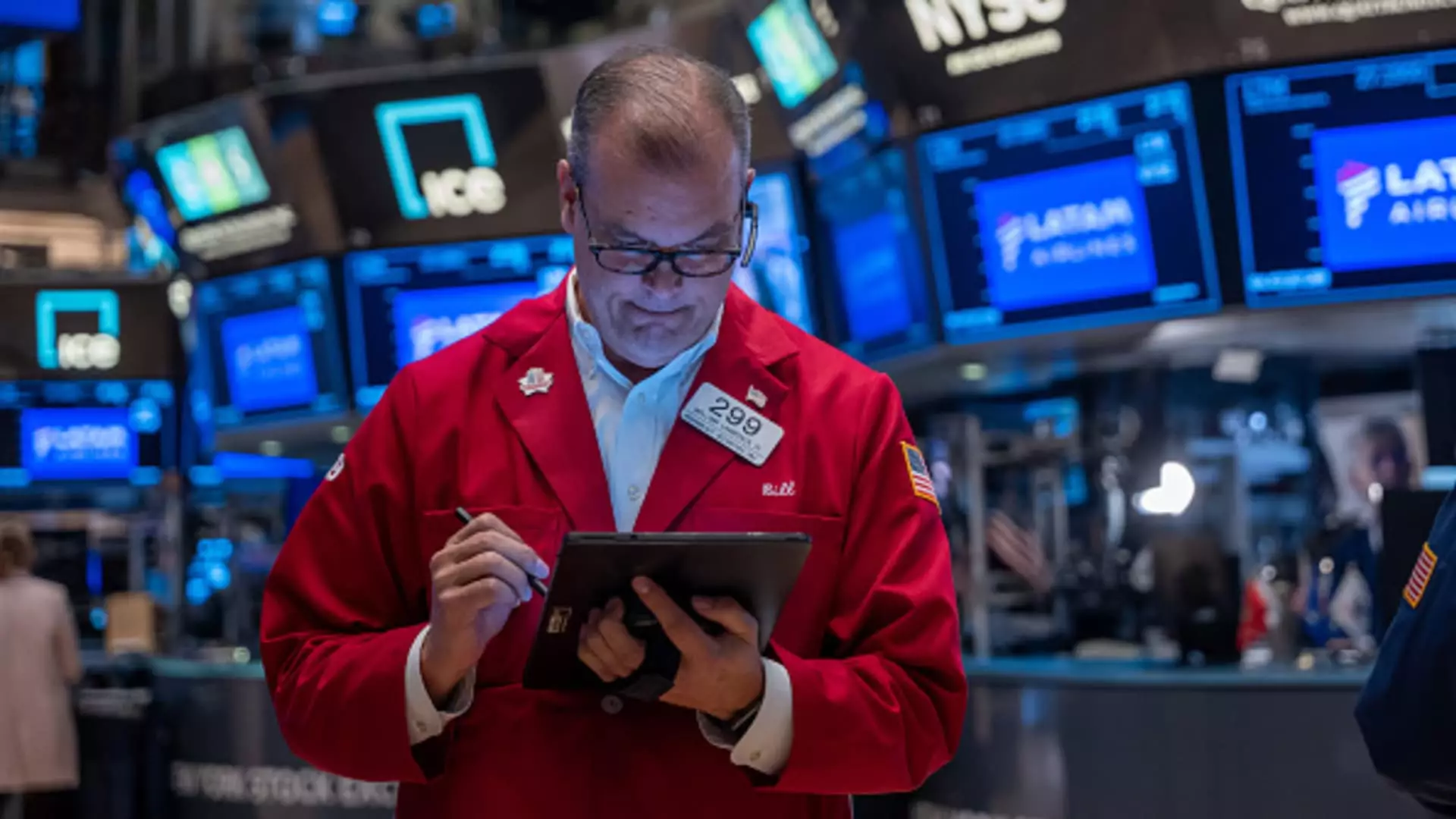As investors look toward tomorrow, the stock market has presented a murky picture with the Dow Jones Industrial Average and the S&P 500 showing second-day declines. In the latest edition of the “Stocks @ Night” newsletter, we unveil critical data that provides context to the ongoing volatility in the financial markets, as well as key companies and economic indicators to keep an eye on during the upcoming trading sessions.
Economic forecasting can be akin to navigating through a fog; however, one of the clearest signs of what lies ahead is often the yield curve. Recently, the 10-year Treasury yield has surged above 4.2%, capturing the attention of investors and analysts alike. Interestingly, this yield became the most searched ticker on CNBC.com, outstripping interest in all other top tickers, indicating a heightened awareness of how interest rates impact economic conditions.
Meanwhile, the 2-year Treasury yield is currently sitting at 4.03%, while the yield on the one-year Treasury bill has climbed to 4.26%. The six-month bill is yielding 4.49%, and the three-month T-bill has reached 4.63%. Notably, the one-month T-bill yield stands at 4.78%. These figures illustrate the shifting landscape of debt instruments as investors adjust their portfolios in response to economic indicators and Federal Reserve policies. The Fidelity Corporate Bond ETF (FCOR) now yields 4.11%, showcasing the competitive returns available in the corporate bond market.
Shifting to the corporate sector, Starbucks has recently come under fire, observing a startling 4% downturn in extended trading. This decline comes as the coffee giant announced it would be suspending its guidance for fiscal 2025, citing disappointing same-store sales. In a bid to placate investors, the company has opted to increase its dividend from 57 cents to 61 cents per share. While this decision may offer short-term relief, it raises questions about the long-term growth trajectory of the brand. The durability of Starbucks’ market position amid a shifting landscape of consumer preferences remains to be seen, particularly as the company grapples with internal and external challenges.
On another front, McDonald’s has been in the crosshairs of public health concerns as the Centers for Disease Control and Prevention (CDC) reported 49 E. coli cases linked to the fast-food chain. While most cases were identified in Colorado and Nebraska, the ripple effects have spread to several other states including Oregon and Iowa. The immediate impact has seen McDonald’s shares drop by approximately 6% in after-hours trading. Comparisons have already begun to surface with Chipotle, which underwent a protracted recovery from its own health crisis years earlier. As McDonald’s stops using fresh slivered onions and quarter-pound beef patties in various states, the question arises as to whether the company will manage to recover in a timely fashion or if this will mark a more prolonged period of turmoil.
Boeing has remained a lively topic within the financial sector, particularly with recent discussions surrounding labor negotiations led by Phil LeBeau. The company’s stock experienced a 5% uptick over the past week despite being down 10.6% in the preceding three months. With a labor union deal possibly on the horizon, uncertainties still cloaked the market as investors watched closely for outcomes that could significantly affect the aerospace behemoth’s future.
Additionally, Coca-Cola is on the radar as CEO James Quincey is set to address the market following the release of its quarterly report. Coca-Cola’s stock has shown a 7% increase in the past three months, but investors are keenly aware of how the beverage giant navigates changing consumer preferences and market dynamics.
Investors are also paying attention to the performance of other significant firms, including AT&T, GE Vernova, and Tesla, as they prepare to announce their quarterly earnings. With the shifting market conditions, stock performances across these entities will provide further insight into the broader implications for the economy.
The initial outlook for the upcoming trading sessions suggests a cautious approach as uncertainties abound. As companies release their earnings and economic indicators evolve, investors will be left to decipher the fine line between volatility and opportunity. In this climate, informed decision-making will be critical to navigating the increasingly complex tapestry of the financial markets.

